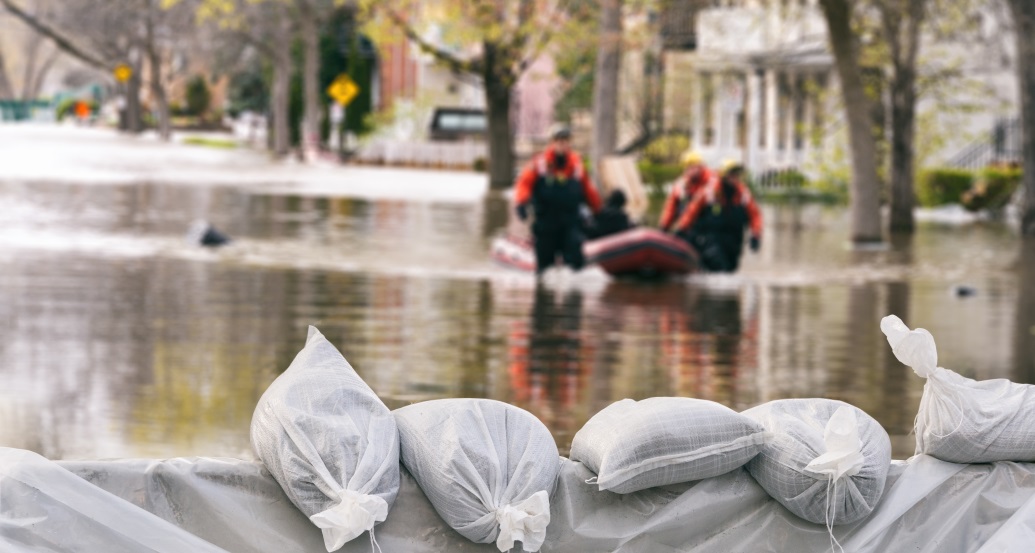Comedian Ron White likes to tell us that “you can’t fix stupid“, but it seems he was wrong, at least as far as federal policies are concerned. It just takes half a century.
As documented in the 2002 book, The Restoration Economy, one of the major contributing factors leading to the billions of dollars of annual flood damage in the U.S. is the federal flood insurance program, which has been rewarding people for living in stupid locations. Rather than giving flooded-out homeowners an incentive to move to higher ground, the government simply pays them to rebuild in the same location, over and over.
This ludicrous situation is finally changing. FEMA is injecting some desperately-needed intelligence into the National Flood Insurance Program by updating its pricing methodology. They say that the goal is “to communicate flood risk more clearly, so policyholders can make more informed decisions on the purchase of adequate insurance and on mitigation actions to protect against the perils of flooding.”
The 21st century rating system, Risk Rating 2.0—Equity in Action, provides actuarially-sound rates that are equitable and easy to understand. It transforms a pricing methodology that has not been updated in 50 years by leveraging improved technology and FEMA’s enhanced understanding of flood risk.
“The new pricing methodology is the right thing to do. It mitigates risk, delivers equitable rates and advances the Agency’s goal to reduce suffering after flooding disasters,” said David Maurstad, senior executive of FEMA’s National Flood Insurance Program.
“Equity in Action is the generational change we need to spur action now in the face of changing climate conditions, build individual and community resilience, and deliver on the Biden Administration’s priority of providing equitable programs for all,” he added.
The National Flood Insurance Program provides about $1.3 trillion in coverage for more than 5 million policyholders in 22,500 communities across the nation. Understanding the magnitude of even the smallest changes of a program of this scale, FEMA devoted thousands of hours to develop the new pricing methodology to ensure equity and accuracy.
In developing the new rates, FEMA coordinated with subject matter experts from the U.S. Army Corps of Engineers, U.S. Geological Survey and the National Oceanic and Atmospheric Administration along with experts from across the insurance industry and actuarial science to ensure alignment with federal regulations, systems, guidance and policies.
The new methodology allows FEMA to equitably distribute premiums across all policyholders based on the value of their home and the unique flood risk of their property. Currently, many policyholders with lower-value homes are paying more than they should and policyholders with higher-value homes are paying less than they should.
To provide more equity, FEMA now has the capability and tools to address rating disparities by incorporating more flood risk variables. These include flood frequency, multiple flood types—river overflow, storm surge, coastal erosion and heavy rainfall—distance to a water source and property characteristics such as elevation and the cost to rebuild.
The cost to rebuild is key to an equitable distribution of premiums across all policyholders because it is based on the value of their home and the unique flood risk of their property. This has been an industry standard for years.
FEMA is conscious of the far-reaching economic impacts COVID-19 has had on the nation and existing policyholders and is taking a phased approach to rolling out the new rates:
- In Phase I: New policies beginning Oct. 1, 2021 will be subject to the new rating methodology. Also beginning Oct. 1, existing policyholders eligible for renewal will be able to take advantage of immediate decreases in their premiums.
- In Phase II: All remaining policies renewing on or after April 1, 2022 will be subject to the new rating methodology.
FEMA continues to engage with Congress, its industry partners and state, local, tribal and territorial agencies to ensure clear understanding of these changes.
Photo of flooded neighborhood in Houston, Texas via Adobe Stock.

